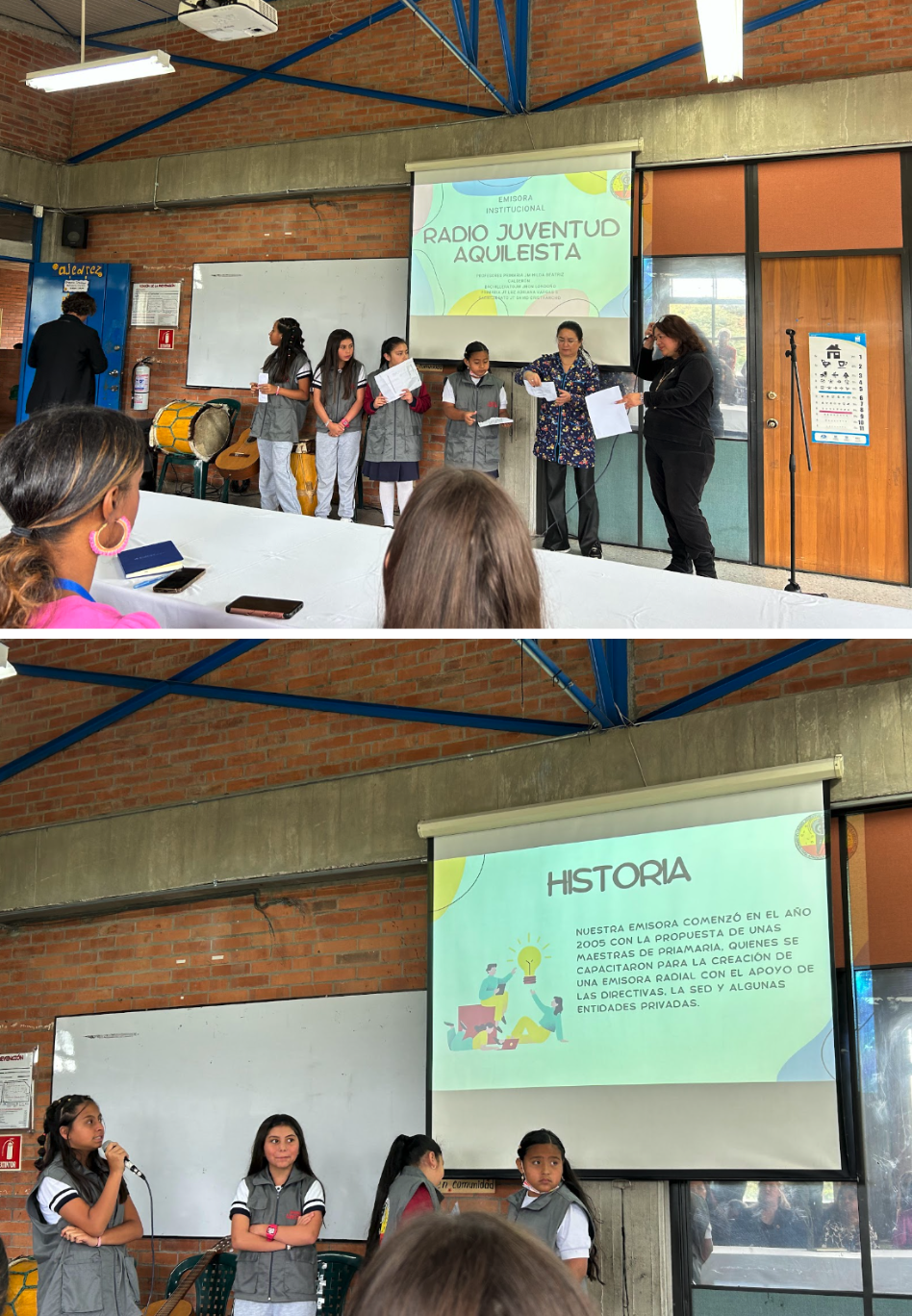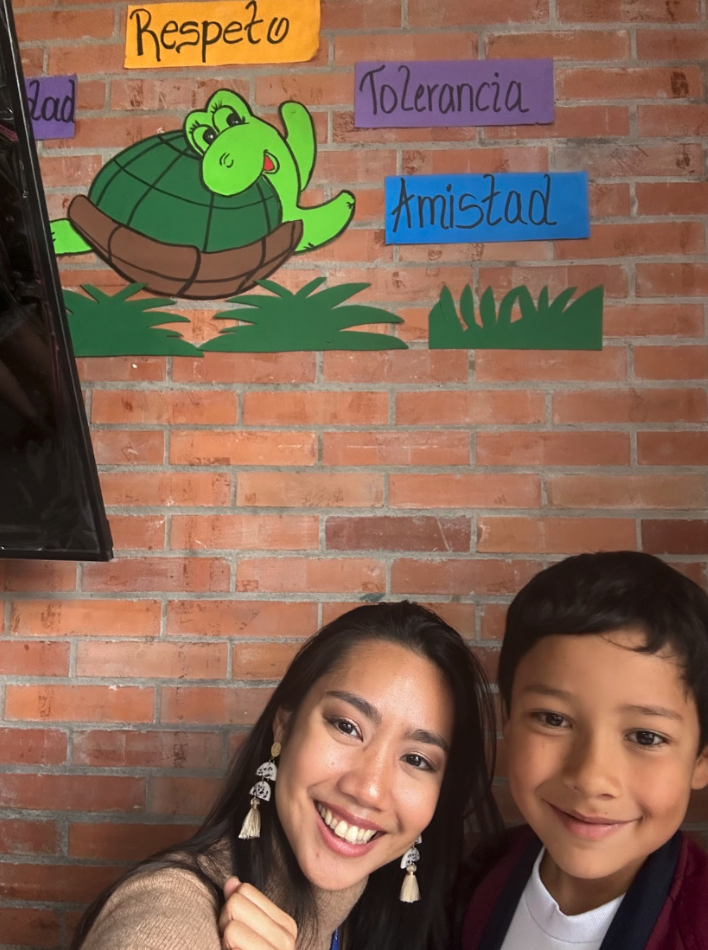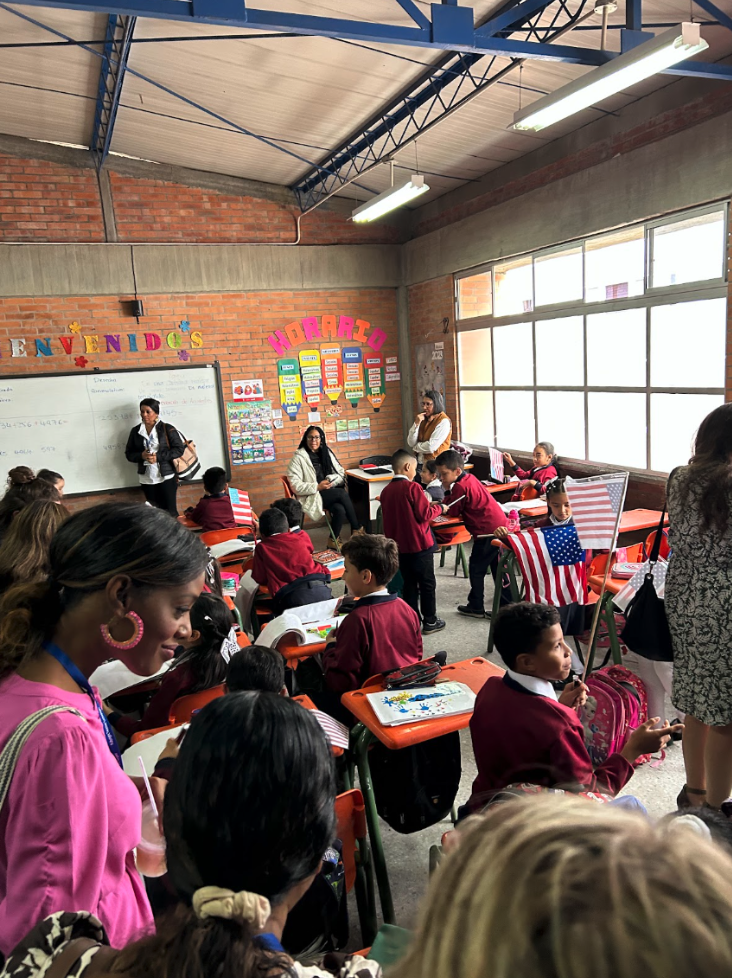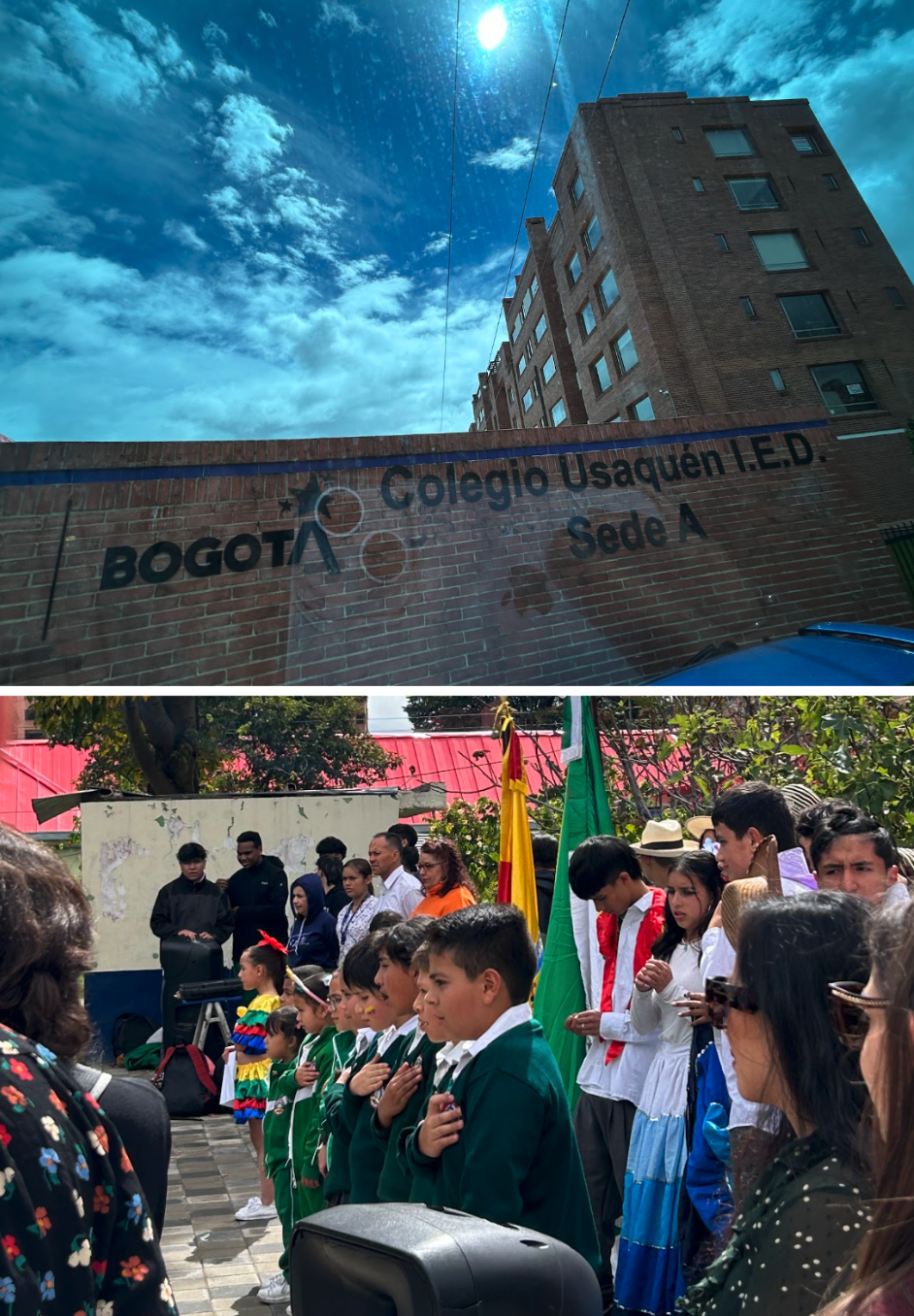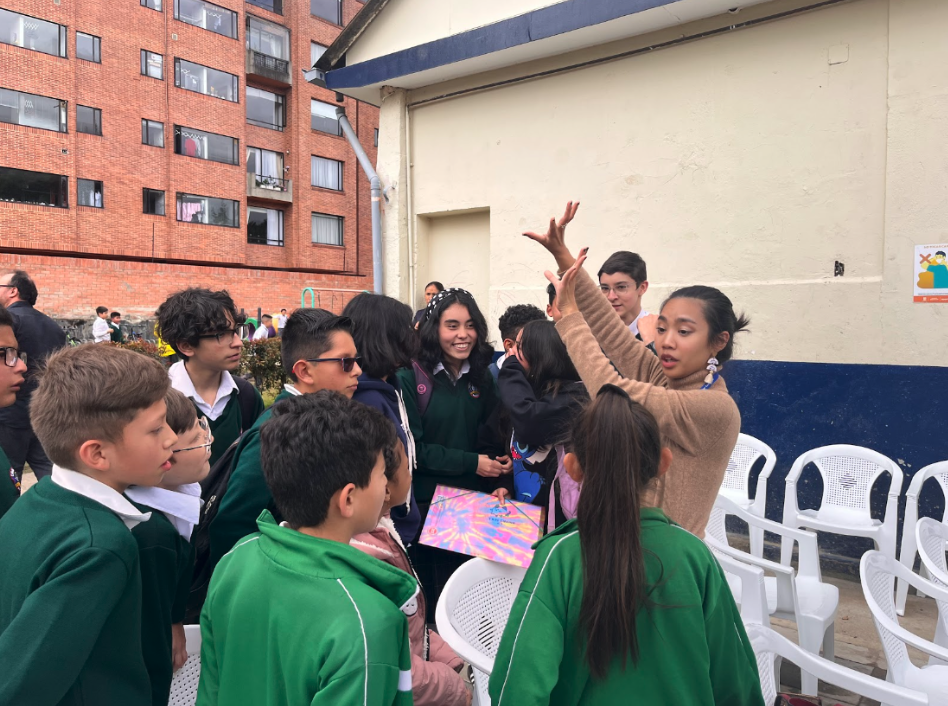The School Visits Commence
Day 2 started bright and early. We fueled up for another full day of activities with another delicious breakfast buffet. At 7:30 AM, we were off to our first school visit! I had so much fun during the school visits. It was such a privilege to be able to tour different campuses, observe classes, and engage with students and faculty and both the primary and secondary levels. We visited two schools: Aquileo Parra and I.E. Distrital Usaquen. Each school gave us the warmest of welcomes.
The Principal and English teacher of Aquileo Parra
After the welcoming remarks by the Principal and English teacher at Aquileo Parra, the students performed a traditional dance and then we were ushered into a classroom to learn about how the school implements Project Based Learning. I was blown away by several aspects:
The collective efficacy in the faculty and staff
The interdisciplinary collaboration between teachers
Explicit and direct instruction of socioemotional skills
The commitment to inclusive education and how this commitment is embodied in the school culture
The student leadership and agency
The students presented several projects that covered all these four aspects. As the students presented, I could not help but marvel at their comfort with public speaking and presentation skills. While my students are amazing, they need to take a page from the presentation playbook of the students at Aquileo Parra!
Students presenting one of their projects - the Youth Radio Station
The school values. This 2nd grade student knew them all by heart
Visiting a classroom
One thing I wondered about was the logistics of how students managed all of these ongoing projects. Given that the projects were very complex and interdisciplinary, I was curious to know when students worked on the different components of the projects. I was also curious to know what teacher collaboration looked like. For example, did the teachers engage in Professional Learning Communities (PLCs) like American teachers do? If so, what did that structure look like? I also wondered if all the projects were teacher-created but student-led, or if students had a hand at determining the topics for the projects. I was hoping for some time to sit down with the teachers to ask these questions, but unfortunately, we had to go to make it to our next appointment.
The next school on the list was I.E. Distrital Usaquen. When we arrived, the students were in an assembly for an early Colombian Independence Day celebration. We witnessed many classes performing songs and dances. The assembly culminated in one giant dance party!
After the assembly, school was done for the day. I was surprised at how many students stayed on campus to just…hang out. The Fulbrighters were divided into small groups and assigned one or two high school students who walked us around campus, introduced us to their teachers, and answered any questions we had. As I walked with my group, I noticed that there weren’t adults watching the students. The students had an amazing level of freedom, but it didn’t feel unsafe at all. I noticed that the older students would regularly redirect the younger students or offer them assistance. At one point, my group passed by two elementary students who were arguing over something. An older student stepped in and told them to share. I asked the older students if one of the younger students was their relative or friend, and they said that they didn’t know them. Our group’s student tour guide chimed in to let us know that it is very common for the older students to take care of the younger students because they are a community. I did feel a very strong sense of community embedded in the school culture. I thought of how at my school, leaving the students to their own devices during recess or lunch without adult supervision would be unthinkable due to many reasons. Even dismissal time is very supervised! I wondered what the factors at play were for students to be self-managing themselves so successfully at I.E. Distrital Usaquen, and whether or not it would be possible for American schools to give our students that level of autonomy.
Another thing I noticed was how many students wanted to take photos with me because they thought I was Korean! K-Pop truly has taken over the world (Thank you BTS)! I enjoyed teaching the students a little about my home country, the Philippines, and teaching them a few Tagalog words that were cognates of Spanish words!
Many students thought I was Korean. This is me explaining where the Philippines is in relation to Korea.
After our guided walk, we were ushered into a classroom to speak to some of the senior students. We asked them questions about their experience at school, their favorite subjects and why, their opinions about the Colombian education system, and what music and TV shows they liked. After they answered our questions, the tables were turned and they asked US questions. They asked us about how our experience in Colombia has been so far, what our thoughts and opinions are of the Colombian education system, and our favorite Colombian food.
After our conversation with the seniors, it was time to make our way back to the hotel to rest before dinner. The Fulbrighters were responsible for Day 2 dinner. Some of us opted to stay at the hotel, and some of us opted to explore the many dining options Bogota had to offer.
Representing CA, HI, NJ, and NY



